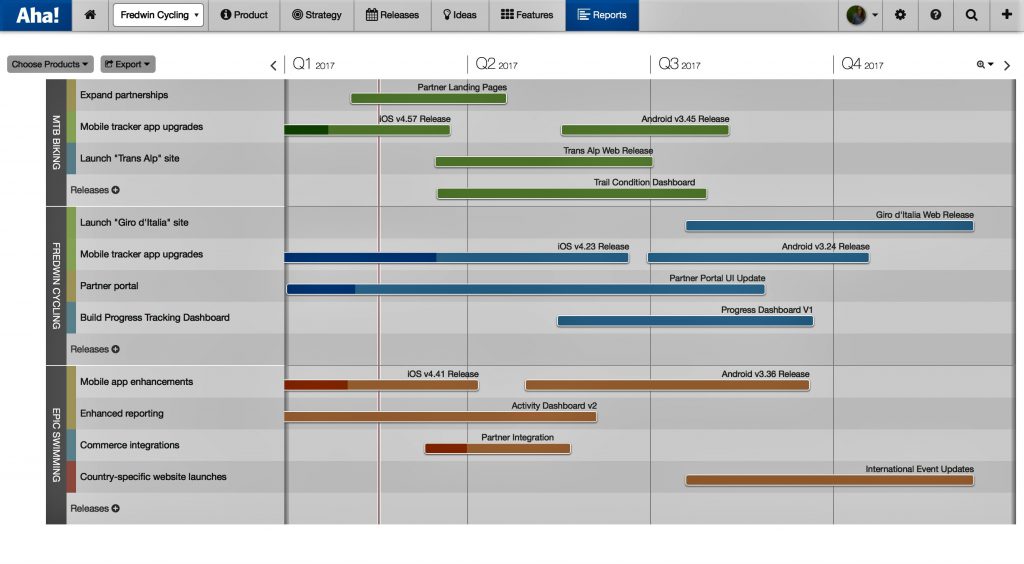Rich functionality combined with focused, intuitive design make Aha! the best choice for product managers
When I found product management, I found a role that changed my career trajectory forever. Since college, I’ve worked in sales, technical support, quality and electrical engineering. After I applied for and accepted my first product management position, I had no idea it would be a journey that continues to evolve to this day. I’ve been fortunate to be a product manager at multiple companies, supporting both hardware and software, both as an individual contributor and a team leader.
Product management is an incredibly dynamic field, a role that truly delivers on the notion that ‘no two days are the same’. It is true. And I love it. As a product manager, I interact with development as much as I do sales, support, marketing, and customer success. I participate in a spectrum of short-term and long-term tasks and initiatives, from strategic planning to business operations to managing partnership decisions. I work with internal and external stakeholders. All of this comes together to help influence that critical component of every product manager’s role: the product roadmap.
While the job description of a product manager varies from company to company, the product roadmap is an important necessity. The style and scope of a roadmap can differ between organizations, but it is the map that guides the direction of the ship. While I hope your company leverages the agile methodology (in one of its many forms and structures), even an organization that uses waterfall still needs to manage a roadmap.
I’ve had to use many different tools to manage a roadmap and backlog, from now-archaic ways like Word and PowerPoint to more current dev management tools like VersionOne and Jira. This can quickly become a fragmented and manual process, spending more time updating documents in multiple places than focused on strategically managing a product portfolio. After completing a deep analysis of product management software, including multiple demos and trials, there was one clear winner in every category: Aha! Product Management software.
It Starts with Vision and Strategy
When you first open Aha!, the sheer volume of options and configuration is incredible, and reports and features are constantly being added. One of the core reasons Aha! wins out over competitors like ProductPlan and VersionOne isn’t the rich functionality alone, but the fact that it is completely focused on being the one and only toolset a product manager needs to efficiently and effectively manage his product portfolio. Take a look at this page:

Before ever building features and releases, it is important to first take a step back and enter the pertinent information in Aha! that is driving the product decisions you make. It starts with a vision, which then builds out to market definition, competition, company mission, and other important guiding factors. Once you have completed these sections to the degree possible, you can next move on to goals:

Aha! allows you to enter goals by company or product, with tags, metrics and progress notes that can then automatically populate to reports that can be shared throughout your organization. In addition to this, you can leverage this effort as you build out your product releases and tie the development effort of individual features to these goals. Setting and managing goals is an effective way to manage your objectives and progress, and this information can be shared with stakeholders at any time. Aha! also supports initiatives, which are the key themes your teams are working on. All of this just builds into an encompassing and visual depiction of where you are spending your development effort, and how it is delivering on the needs and strategic initiatives of your business.
From here, things get even more exciting. Aha! allows you to not only add feature cards to build releases, but you can tie all of the individual effort to the strategic goals and initiatives that you’ve already added into the platform. Here is an example of the power of Aha!, and the tags, categories, effort points, and go-to-market management process around every release.

Aha! has countless reports and dashboards included with the subscription, and the more information you enter into Aha!, the better the reporting and visuals will be that you can share throughout your organization. This truly is a tool that benefits those most who use it holistically, as their sole product management application. With Aha!, the notion of getting out of it what you put into it couldn’t be more true, and the bonus is that the software is incredibly intuitive and effective for product managers.
In a future post, I will take you deeper into the Ideas Portal and other powerful configurations Aha! provides their users. As a product manager who has been forced to use a number of ineffective and inefficient tools in my role, I couldn’t believe how much my focus and effort improved when we added Aha! into our process. Aha! has contributed to greater efficiency, better visibility into my team’s roadmaps, and more effective reporting and decision-making, ultimately tied to our organization’s strategic goals and initiatives. What else could a product manager ask for?






